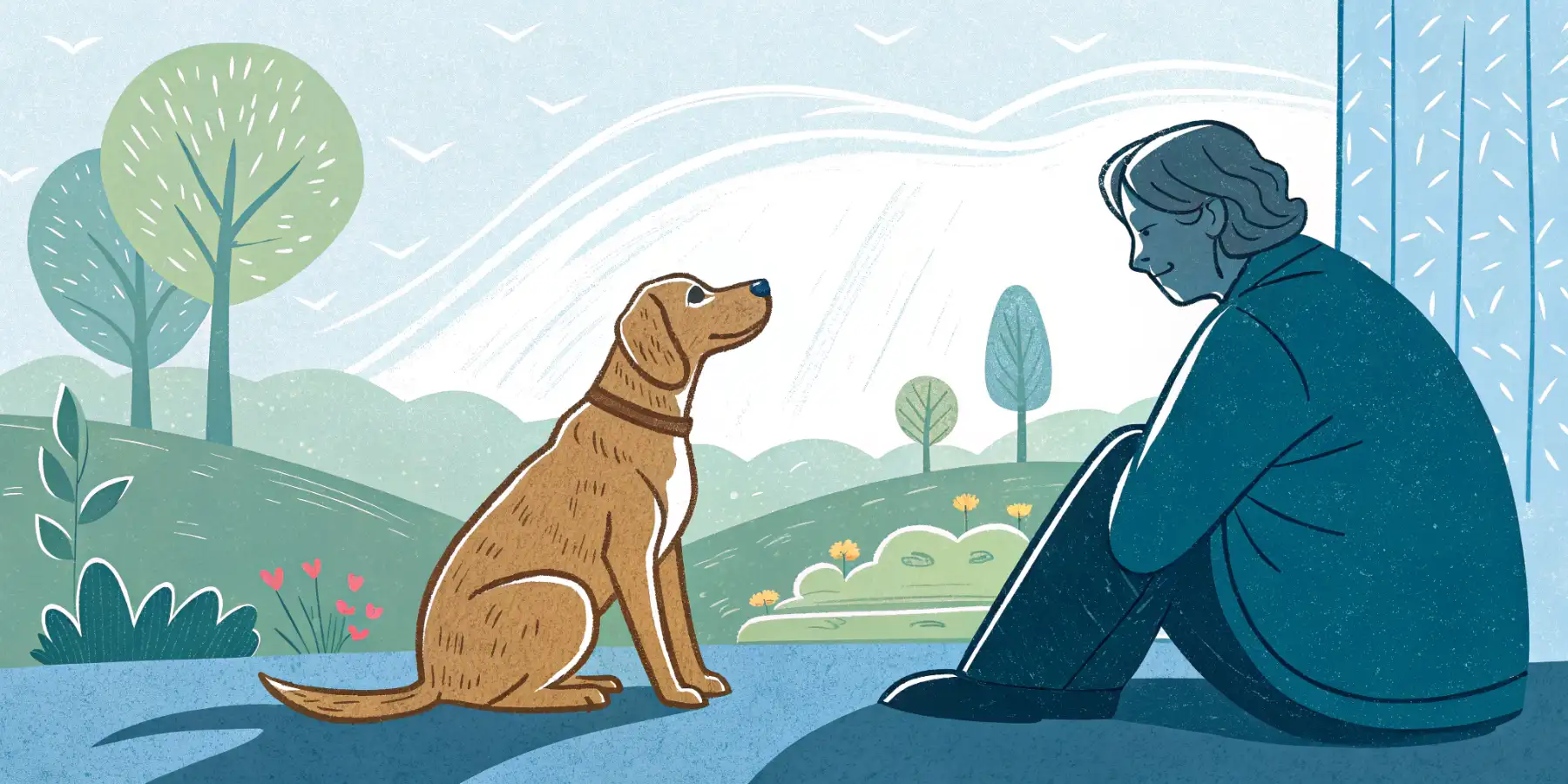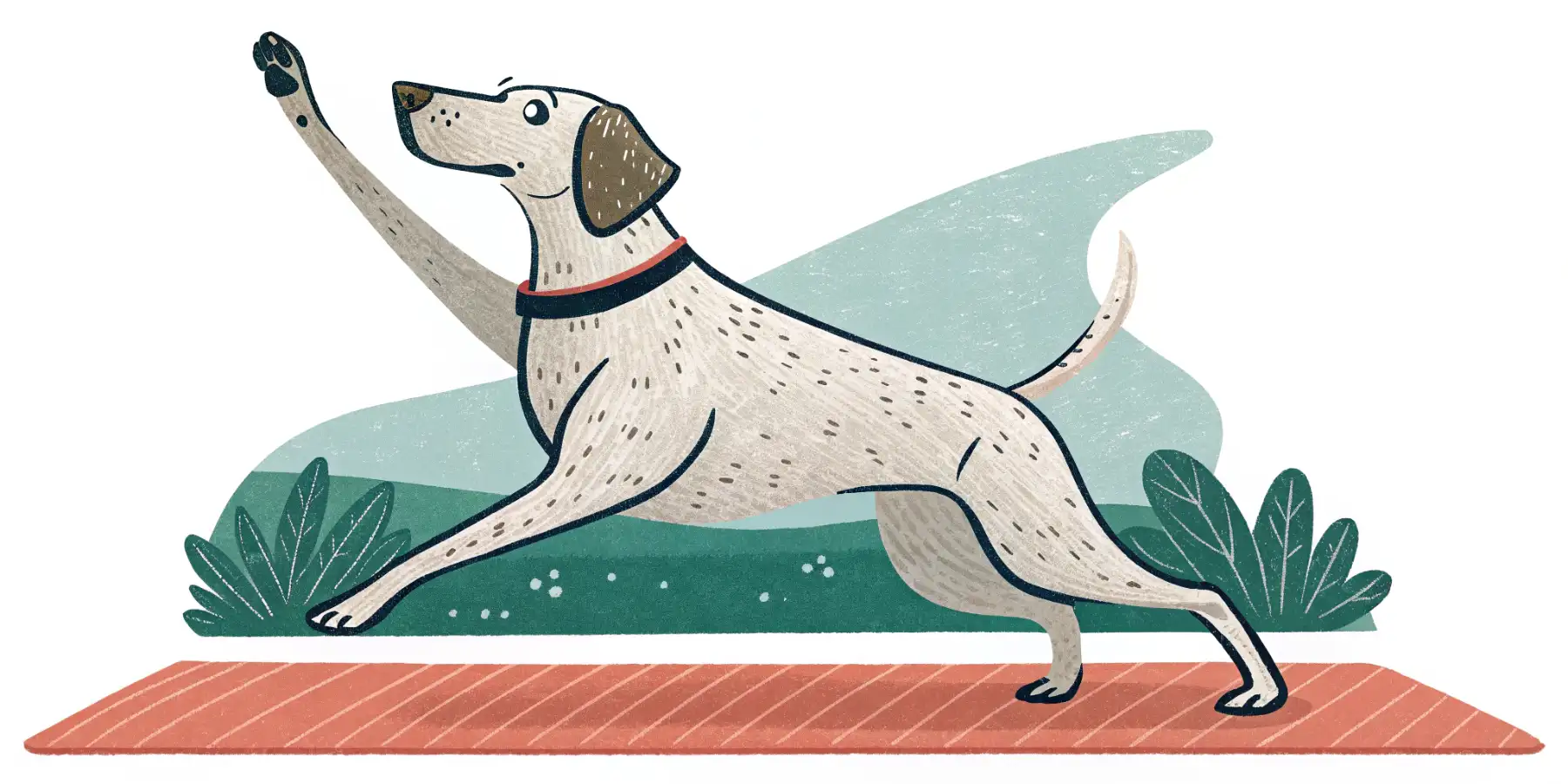
Senior Dog Exercise: Safe & Fun Activity Tips
Is your **senior dog** slowing down? Learn safe & fun **exercise** tips to keep them happy & healthy in their golden years! Click for activity ideas!
Adapting Exercise for Senior Dogs: Keeping Them Active Safely
As our canine companions enter their golden years, their exercise needs change. Just like us, senior dogs can experience joint pain, decreased energy levels, and other age-related issues. But that doesn’t mean playtime is over! Adapting your senior dog’s exercise routine is crucial for maintaining their physical and mental well-being. In fact, regular, modified exercise can significantly improve their quality of life.
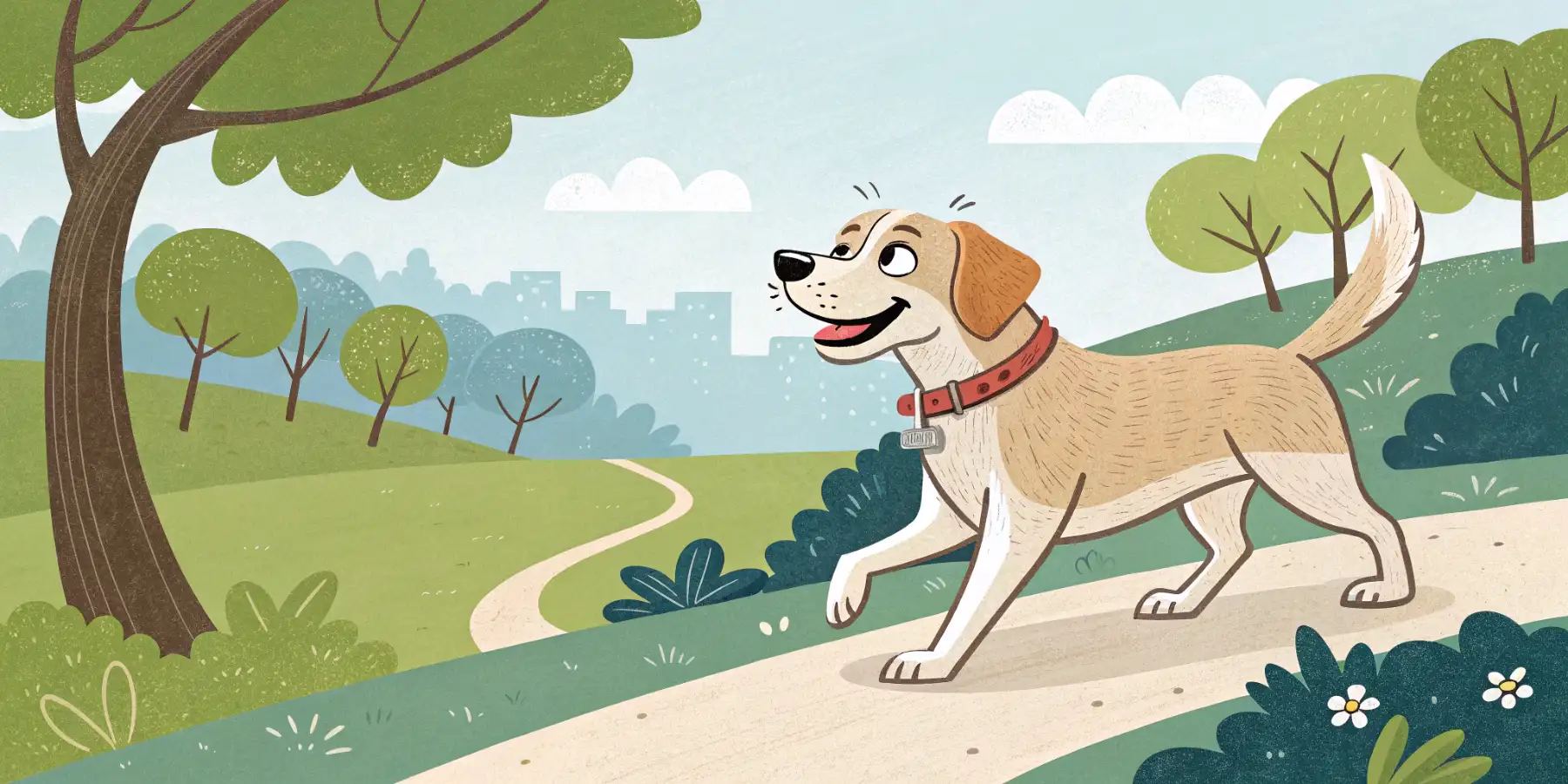 A senior dog enjoying a gentle walk in the park, demonstrating low-impact exercise for older dogs.
A senior dog enjoying a gentle walk in the park, demonstrating low-impact exercise for older dogs.
Understanding the Senior Dog
Before we dive into specific exercises, it’s essential to understand what defines a “senior” dog. This varies depending on breed and size. Smaller breeds tend to live longer, while larger breeds age faster. Generally, dogs are considered senior around 7-10 years old.
Signs your dog might be slowing down include:
- Difficulty getting up or lying down
- Stiffness, especially after resting
- Decreased stamina and slower pace
- Hesitancy to jump or climb stairs
- Weight gain
- Increased sleeping
If you notice any of these signs, it’s a good idea to schedule a vet visit. Your veterinarian can assess your dog’s overall health and rule out any underlying conditions like arthritis, hip dysplasia, or heart problems. In my experience, early diagnosis is key to managing these conditions and keeping your dog comfortable.
The Benefits of Exercise for Senior Dogs
While it might seem counterintuitive to exercise an older dog who is already slowing down, regular physical activity offers numerous benefits:
- Maintains Muscle Mass: Exercise helps prevent muscle atrophy, which is common in senior dogs. Strong muscles support joints and improve mobility.
- Supports Joint Health: Controlled exercise can help lubricate joints and reduce stiffness associated with arthritis.
- Weight Management: Obesity is a major concern in senior dogs. Exercise helps burn calories and maintain a healthy weight, reducing strain on joints and organs. I believe that weight management is one of the most important things you can do for your senior dog’s health.
- Mental Stimulation: Walks, playtime, and even simple training sessions provide mental stimulation, preventing boredom and cognitive decline. Keeping your senior dog mentally sharp is as important as keeping them physically active.
- Improved Digestion: Exercise promotes healthy digestion and can help prevent constipation, a common issue in older dogs.
Adapting Exercise Routines
The key to successful senior dog exercise is modification. Here’s how to adapt your dog’s routine for their changing needs:
Shorter, More Frequent Walks
Instead of one long walk, opt for several shorter walks throughout the day. This allows your dog to exercise without becoming overly fatigued. Consider using a dog stroller for seniors if they tire easily during longer outings.
Low-Impact Activities
Focus on low-impact exercises that are gentle on joints.
- Walking: Walking on soft surfaces like grass or dirt is ideal. Avoid pavement, which can be hard on joints.
- Swimming: Swimming is an excellent low-impact exercise that provides a full-body workout.
- Gentle Stretching: Incorporate gentle stretches into your routine to improve flexibility. Always consult with your veterinarian or a canine rehabilitation specialist before starting any stretching program.
Avoid High-Impact Activities
Avoid activities that put excessive stress on joints, such as:
- Running
- Jumping
- Playing fetch aggressively
- Climbing steep hills
Mental Stimulation
Don’t forget about mental exercise!
- Puzzle Toys: Puzzle toys provide mental stimulation and can keep your dog entertained for hours.
- Nose Work: Hide treats around the house and let your dog use their nose to find them.
- Simple Training: Practice basic commands like “sit,” “stay,” and “come.” Keep training sessions short and positive.
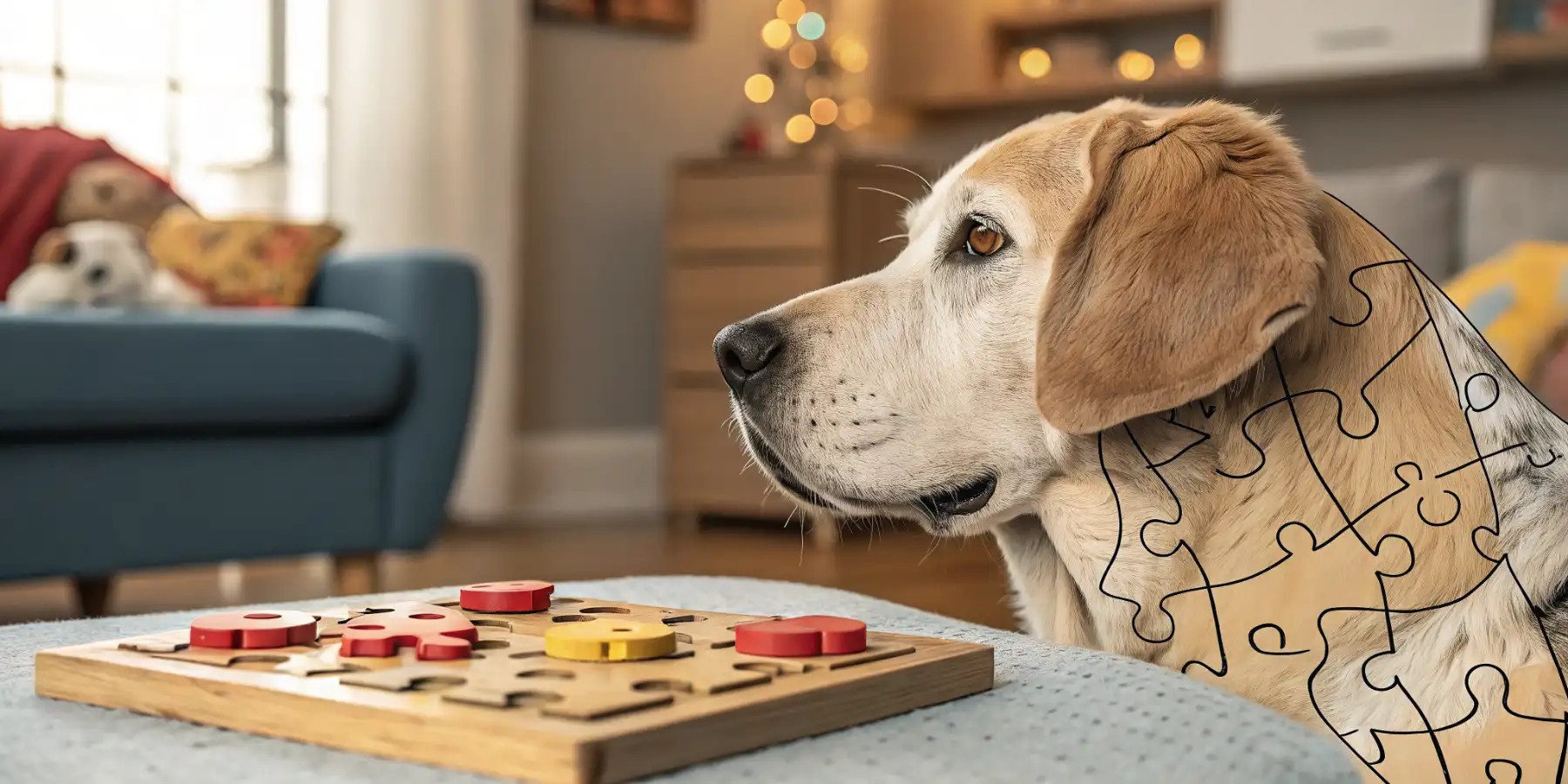 A senior dog focused on solving a puzzle toy, showcasing mental enrichment for older dogs.
A senior dog focused on solving a puzzle toy, showcasing mental enrichment for older dogs.
Important Considerations
- Consult Your Veterinarian: Before starting any new exercise program, consult with your veterinarian. They can assess your dog’s overall health and provide specific recommendations based on their individual needs.
- Listen to Your Dog: Pay attention to your dog’s body language. If they seem tired, stiff, or in pain, stop the activity and let them rest.
- Warm-Up and Cool-Down: Always warm up your dog before exercise and cool them down afterward. This helps prevent injuries.
- Adjust as Needed: As your dog ages, their exercise needs will continue to change. Be prepared to adjust their routine accordingly. The best exercise for senior dogs with arthritis can change from week to week, depending on how they are feeling.
- Hydration: Always provide fresh water before, during, and after exercise.
- Surface Matters: Avoid slippery floors at home. Use rugs and runners to prevent slips and falls, which can be particularly dangerous for senior dogs.
A Hypothetical Scenario
Let’s say you have a 10-year-old Labrador Retriever named Buddy who has started to show signs of stiffness and decreased energy levels. You used to take him for hour-long runs, but now he struggles to keep up.
Instead of giving up on exercise altogether, you can adapt his routine. Start by taking him for two 20-minute walks a day on soft grass. Incorporate gentle stretching into his routine, such as gently extending his legs and neck. Introduce puzzle toys to keep his mind sharp. If Buddy enjoys swimming, take him for a swim in a lake or pool (with supervision, of course!). In my experience, many senior dogs absolutely love the buoyancy and gentle exercise that swimming provides.
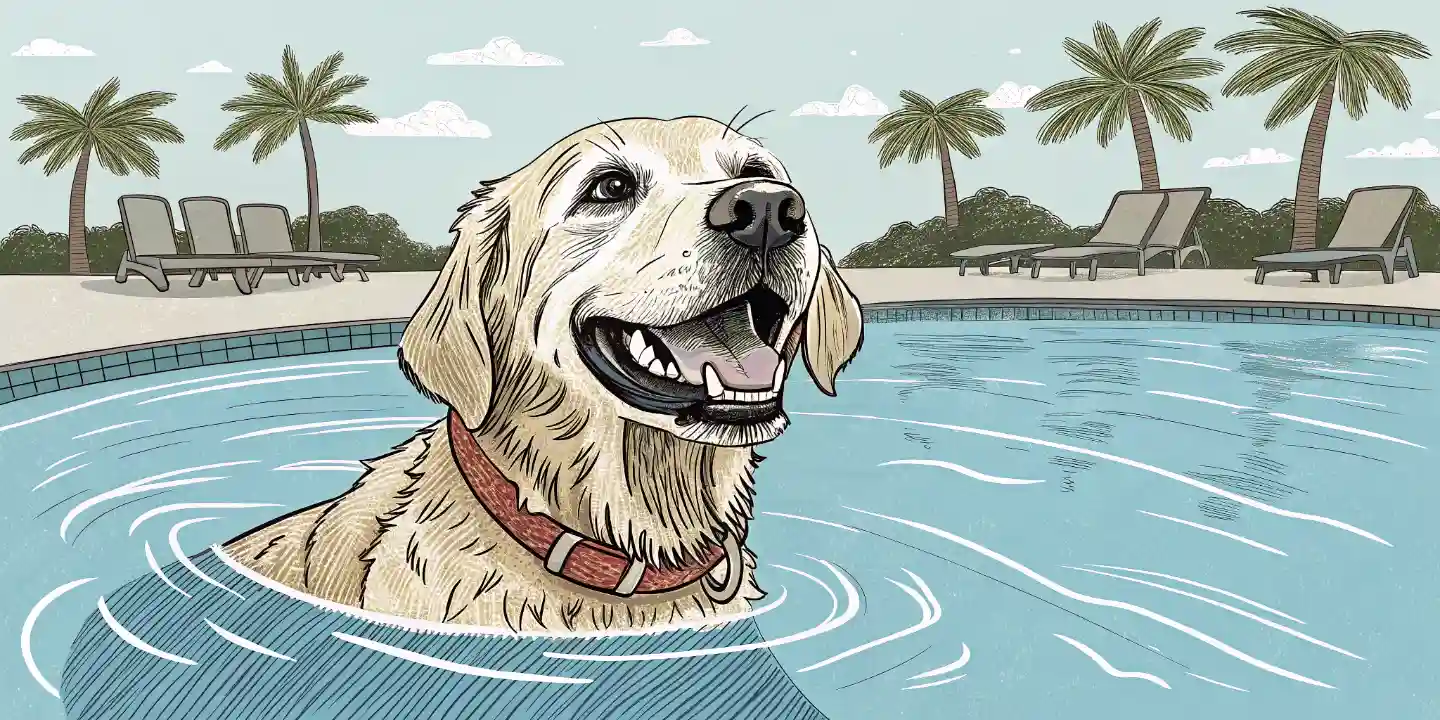 A senior dog enjoying a supervised swim in a pool, demonstrating a great low-impact exercise.
A senior dog enjoying a supervised swim in a pool, demonstrating a great low-impact exercise.
Conclusion
Adapting exercise for senior dogs is essential for maintaining their physical and mental well-being. By understanding their changing needs and modifying their routine accordingly, you can help your furry friend enjoy a happy, healthy, and active life well into their golden years. Remember to consult your veterinarian, listen to your dog, and be patient. With a little love and care, you can ensure that your senior dog continues to thrive. And remember, keeping senior dogs active and engaged is a labor of love that pays dividends in their overall quality of life.

